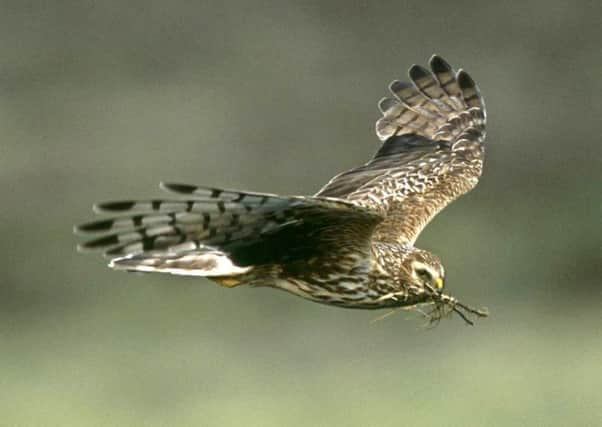Groups united to save the hen harrier from being wiped out


As a bird of prey, hen harriers make contribution to intricate countryside ecosystems, but in recent years their numbers have dropped.
The Hen Harrier Action Plan will co-ordinate action already taken by conservation groups, landowners and wildlife crime officers across the country to ensure a consistent and strategic approach, Environment Minister Rory Stewart said.
Advertisement
Hide AdAdvertisement
Hide AdThe plan will also encourage groups to share best practice to help reverse the decline of these precious birds.
According to the RSPB, there is enough habitat for 300 breeding pairs of hen harriers in England, but in 2014, only four pairs bred. And last year, three nesting males disappeared, leaving just “a handful of pairs” remaining.
Mr Stewart said: “This new plan will transform the fate of one of our most magnificent birds. We are working closely with conservation organisations and landowners and with their help, this plan will help hen harriers flourish once more while coexisting with a thriving rural economy.”
Natural England, which will lead on the new six-point plan, is “firmly committed” to the plan, said Rob Cooke, the agency’s director of terrestrial biodiversity, adding: “We are looking forward to working with a range of organisations and land managers to help secure a future for the hen harrier as a breeding bird in England.”
Advertisement
Hide AdAdvertisement
Hide AdThe plan was developed by Defra in conjunction with the RSPB, Game and Wildlife Conservation Trust, Moorland Association, National Gamekeepers Organisation, National Parks UK.
Together, they will:
Monitor hen harrier numbers in England and the UK via satellite tagging and tracking;
Share best practice with land managers and gamekeepers, encouraging the provision of food for birds of prey;
Work closely with the Raptor Persecution Priority Delivery Group to analyse intelligence on persecution and deliver more effective enforcement and deterrence measures;
Advertisement
Hide AdAdvertisement
Hide AdMonitor and protect nests and winter roosts from disturbance and destruction;
Work with landowners to reintroduce hen harriers to suitable areas in the South of England;
Scope out feasibility for trialling brood management.
Some of these actions, like monitoring and sharing best practice, are already underway at known nesting sites, such as in the Forest of Bowland in Lancashire.
Other actions, such as trialling brood management, will be looked into by Natural England which will work closely with partners to determine criteria for a field trial.
Advertisement
Hide AdAdvertisement
Hide AdAmanda Anderson, director of the Moorland Association, said: “The plan contains exciting new actions that we are looking forward to working on with others to ensure they are successful.”
Tim Bonner, chief executive of the Countryside Alliance, added: “We believe the plan will go a long way to resolving one of the most divisive issues in upland conservation and help bring together all those who care deeply about the future of the uplands. We have always been clear that for any plan to be successful it must address the causes of illegal persecution, as well as tackling persecution itself.”
The partners should be congratulated for identifying a way forward, Mr Bonner said.